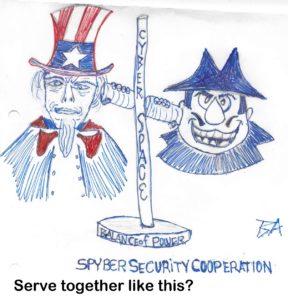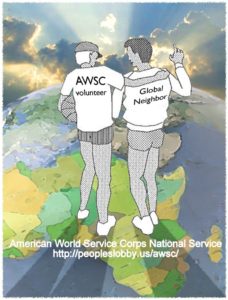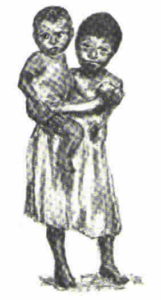EMF ASSESSMENT REPORT
359 Jean St, Mill Valley
December 31, 2018
INTRODUCTION
I am a Building Biology Environmental Consultant (BBEC), trained and certified by the International Institute for Building Biology and Ecology (IBE) in the measurement and mitigation of electromagnetic fields (EMFs). I also completed an advanced certification program from IBE and was certified as an Electromagnetic Radiation Specialist (EMRS) 2014.
The Building Biology Institute (IBE) is a non-profit training and education organization that started in Germany after World War II when homes were being built that made people ill, for example, from toxic paints. Building Biology is the holistic study of how the built environment affects human health. There are three main areas of focus: indoor air quality, healthy building construction and electromagnetic fields. The Institute was started in the U.S. in 1987.
Dwayne Hunn requested that I assess his 4-bedroom, 2-bath, two-story home. While this is a single home, it has been divided into two living areas with an inside stairway connecting the two areas. Dwayne lives in the upstairs half of the house. He was especially concerned about cellular antennas located at a fire station across the street from his home. I took measurements on Sunday, December 30, 2018 between 10:00 a.m. and 2:30 p.m. These results may not be repeatable if conditions inside or outside the building change, or for results collected during a different time of day or season. These measurements should not be relied upon to be representative of conditions at any other time.
An excellent source information on the health effects of RFs/EMFs is the BioInitiative Report. This is the only fully comprehensive, independent review of all the peer reviewed studies to date. It was first published in 2007 and included about 2,000 studies. It was updated in 2012 with 1,800 more studies. The full report, along with the Summary for the Public, can be found at bioinitiative.org. The report includes chapters on evidence for effects on reproduction, Alzheimer’s, neonatal, autism, electrical sensitivity, nervous system, brain tumors, other cancers, DNA damage and more.
Symptoms of overexposure or sensitivity to radio frequency (RF) and other EMFs include sleep problems, chronic fatigue, headaches, difficulty concentrating, tinnitus (ringing in the ears), memory problems, heart palpitations, tingling, nausea, joint pain, numbness, depression, irritability, swelling of the face or neck, rashes. It is estimated that about 30% of the world’s population is moderately sensitive to EMFs and 3% is highly sensitive. An excellent source of information is a report by Dr. Erica Mallery-Blythe, MD, Electromagnetic Hypersensitivity: A Summary. Electrical hypersensitivity is recognized by the ADA.
SUMMARY OF KEY FINDINGS
- Extremely high levels of radio frequency from devices inside the house as well as from nearby cellular antennas.
- Ungrounded outlets in most of the house—this is an equipment safety issue as well as health issue, as this can create high electric fields.
RADIO FREQUENCY
Radio frequency is emitted from wireless sources such as cell phones, cell towers, wireless routers, cordless phones, baby monitors and SmartMeters. It was classified as a 2B carcinogen (possible human carcinogen) by the World Health Organization in 2011 due to evidence of increased risk for brain tumors. In addition, the National Toxicology Program released part of its $25,000,000 study of rats that were exposed to wireless (cell phone) radiation. After only two years of intermittent exposure, one in 12 male rats got either a brain tumor, heart tumor or pre-cancerous lesion.
The California Medical Association, American Academy of Pediatrics and the American Academy of Environmental Medicine (AAEM) have all issued letters or resolutions calling for a reduction in exposures. According to the AAEM, “the peer reviewed, scientific literature demonstrates the correlation between EMF/RF exposure and neurological, cardiac and pulmonary disease, as well as reproductive disorders, immune dysfunction, cancer and other health conditions. The evidence is irrefutable.” (Quoted from an AAEM document entitled “Wireless Smart Meter Case Studies”, referencing recommendations passed on October 23, 2013.)
Following are the Building Biology guidelines for radio frequency in the sleeping areas:
| Power Density in Microwatts | No Concern | Slight Concern | Severe Concern | Extreme Concern |
| Per square meter (uW/m2) | <0.1 | 0.1 – 10 | 10 -1,000 | >1,000 |
I used the Gigahertz Solutions HFE59B and HFW59D meters to take measurements. These are two of the company’s top-of-the line RF meters. Measurements were taken in microwatts per square meter (uW/m2). I took readings initially with all devices in the home on, then with devices off. Following are the readings:
| Radio Frequency (in uW/m2) | |||
| Location | Readings with wireless devices on | Readings with all wireless devices off | Comments |
| Desk in family room | 33,000 | 1,600 | Router near desk |
| Couch in family room | 16,700 | 2,700 | |
| Drafting table in family room | 52,000 | 1,170 | Cordless phone on table |
| Kitchen table | 19,000 | 19,000 | |
| Master bedroom | 5,400 | 5,400 | |
| Spare bedroom | 1,140 | 1,140 | |
| Bathroom | 19,500 | 19,500 | |
| Garage | 12,800 | 12,800 | |
| Tim’s bedroom (downstairs) | 5,700 | 5,700 | |
| Tim’s spare room | 7,000 | 6,800 | |
| Tim’s dining table | 2,000 | 560 | |
| Tim’s kitchen | 15,300 | 14,900 | |
| Exterior deck | — | 42,000 | |
| Dwayne holding cordless phone | 50,000 | — | At about 1-foot distance |
| Dwayne’s cell phone | 20,000+ | At about 1-foot distance | |
| Microwave | 20,000+ | In the kitchen, when in use |
There were extremely high levels of RF exposure in most rooms of the house. The main source of RF in the family room was the AT&T modem/router. Dwayne had been told by AT&T that they had disabled the wireless, but it was still emitting when I did my testing. The main source of RF in all the other rooms were the cellular antennas at the fire station across the street.
Internet/Computer Area
With AT&T U-verse, it is difficult to turn the wi-fi on and off. In order to more easily control the wi-fi, a separate modem and router is needed. AT&T U-verse only works with their all-in-one modem. I recommend that you either use AT&T U-verse with the wi-fi always off (and verify that it is truly off), or that you change to another provider so that you can more easily control the wi-fi. Comcast and Wave are two providers that allow a separate modem and router. There may be other providers in your area—you would need to investigate if he could use a separate modem and router with their service.
If you decide to change services, here are the steps for Comcast, as an example:
Step 1. Order the following:
- Arris TM822R or Arris TM822G modem. I found the TM822R on-line at Best Buy.
- Any Netgear router except their All-in-one modem router. You could call Best Buy or some other store and ask for one that is lower powered. But the idea is to leave the wi-fi off, so any Netgear router should be fine. It should have an easy on-off button for wi-fi.
Step 2. Call Comcast and have them come out to set up the new equipment. Now you can have internet connectivity without the wi-fi on. (Note: Return the AT&T modem/router, as you are being charged for it each month.)
You also need to move the printer closer to the computer so it can be hard wired. Be sure to turn off the wireless in the printer settings. With the printer hard wired, you should not need to use any wi-fi.
Replace wireless mouse with wired mouse. Replace cordless keyboard with corded keyboard. Once these are plugged in, turn off the Bluetooth on your computer, as well as laptop, if applicable. Also make sure that the wi-fi is turned off your computer and laptop.
Verify that all the wireless on the devices is off. I recommend the Safe and Sound detector ($149) available from Safe Living Technologies (slt.co).
Cordless Phone
I recommend that you replace the cordless phone. The AT&T CL4940 has answering machine, caller ID and speaker phone. You can get it on line. If you want to be able to walk around with the phone, then I recommend you get a corded “clamshell” phone, such as AT&T 210 Trimline to use as extensions around the house. This phone has no power cord, so you only need a long phone cord to walk around with the phone.
AT&T CL4940 (Amazon) AT&T 210 Trimline corded phone (Amazon)
Cellular Antennas
To shield the house from the cellular antennas, you could consider painting the side of the house facing the fire station with Y-shield paint, as well as covering the windows with either curtains made of shielding fabric or with special shielding window film. However, painting this house could be quite a challenge. The sides of the house are covered with wooden shingles. There is a small gap between each shingle, and the paint would need to fill in this gap. Also, the edges of every shingle would need to be painted. At best, with a standard flat surface, you might get 80 – 90% reduction in RF. That is because there are always small nooks and crannies that the RF can get through. Given the shingles on the side of the house, the result would likely be less than this. I recommend that you consult with Stephen Scott (emfscott1@gmail.com) to get his opinion on the viability of shielding. He is an electrician in Novato who is expert at applying this type of paint. This paint should also be grounded. Note: the roof may also need to be shielded. The heavy-duty foil sold by slt.co provides an excellent shield. Stephen Scott could also advise on shielding the roof.
It is possible that you might still need a bed canopy, even after shielding the house. You may not get the levels low enough in the sleeping area. You would need to remeasure after the exterior shielding has been completed. Another option for the bedroom is to paint it with Y-shield paint. This is discussed further in the report, under Electric Fields.
Other Notes
Turn off Bluetooth in car. Verify with meter that it is off.
Microwave leaks when in use. Stand outside of the kitchen when using.
The cell tower RF was so strong that I could not tell if the SmartMeter was an issue. However, it is so close to the bedrooms that I recommend opting out as a precaution.
AC MAGNETIC FIELDS
AC magnetic fields (60 Hz) were classified as a 2B carcinogen (possible human carcinogen) in 2001 by the World Health Organization due to evidence of increased risk for childhood leukemia. An excellent source of information about reported health effects is emf-portal.de.
There are four main sources of AC magnetic fields:
- Point sources. These are the electrical devices within a home or office. They only give off a magnetic field when they are turned on. We generally are not concerned about these sources, since the magnetic field strength drops off very quickly, usually down to ambient levels within a foot or so of the device.
- Long distance power transmission lines. High tension power lines may give off high levels of magnetic and electric fields. Also, local power distribution lines can give off high levels of magnetic and electric fields. Magnetic fields from power lines vary depending upon the load on the system. They are higher in the late afternoon and early evening as people return home from work and turn on lights and appliances. They are also typically higher in the summertime when people use their air conditioning.
- Wiring errors. For example, neutral wires from two or more circuits that are joined together in a junction box can cause elevated magnetic fields.
- Stray current. If a neighbor’s home has wiring errors, then stray current can enter your home via the water pipes, cable or telephone lines.
While there is no exposure threshold in the U.S. for residential 60 Hz magnetic fields, a number of credible sources have provided suggested thresholds for maximum exposures over the last several years. The EPA in various publications has recommended 60 Hz exposure thresholds from 0.5 mG to 2.5 mG. In 1992, the Swedish government established 2.0 mG as a standard for computer emissions at a distance from the front of the monitor. In 1989, a National Council on Radiation Protection Report draft suggested 2.0 mG, which was later withdrawn. Dr. Robert Becker, author of The Body Electric and Cross Currents recommended 1.0 mG as an exposure threshold. The Building Biology Institute recommends less than 1.0 mG for the sleeping areas (slight concern range).
I took magnetic field readings with a Gigahertz Solutions NFA1000 EMF meter. Readings were as follows:
| Magnetic Fields (in milligauss) | |
| Location | Reading |
| Desk in family room | .19 |
| Couch in family room | .20 |
| Kitchen table | .44 |
| Kitchen (at stove) | .87 |
| Kitchen (at sink) | .75 |
| Master bedroom | .37 |
| Bathroom | .27 |
| Spare bedroom | .20 |
These levels are all less than 1 mG, which is the Building Biology slight concern range. There are some slightly elevated levels in the kitchen. This from the refrigerator. It is normal for refrigerator motors to produce magnetic fields.
I found no evidence of wiring errors in the home.
AC ELECTRIC FIELDS
AC electric fields are extremely low frequency (ELF) 60 hertz fields (60 wave cycles per second). These fields come primarily from wiring in the walls and cords that are plugged in. The cords and wiring always give off an electric field, even if the devices are turned off, as long as the power for the circuit is turned on. Homes built with Romex (plastic jacketed) wiring, which is most homes, generally have higher than recommended levels of electric fields. The electric fields emanate out about six feet from the walls and from cords that are plugged in.
Electric fields have been linked to sleep disruption, impact on immune system, heartbeat, calcium metabolism in cells, muscle and nerve pain, change of enzyme activity in cells, change in cell division and DNA synthesis. The University of Toronto performed a study of Ontario Hydro workers (American Journal of Epidemiology, 7/10/1996) which showed that electric fields were far more important in the development of cancer in electrical workers than were magnetic fields. Exposure to both fields increased the risk for cancer.
Following are the Building Biology guidelines for the sleeping areas:
| AC Electric fields | No Concern | Slight Concern | Severe Concern | Extreme Concern |
| In volts per meter | <0.3 | 0.3 – 1.5 | 1.5 – 10 | >10 |
We like to see less than 1.5 V/m for a healthy person and less than .3 V/m for a sensitive person. I typically find about 4 – 8 V/m in the sleeping areas of most homes. Levels at the bed were as follows:
| AC Electric Fields (in Volts per Meter) | |||
| Location | Reading | Concern Range | Comments |
| Upper left side | 9.7 | Severe | |
| Upper right | 9.6 | Severe | |
| Lower left | 5.3 | Severe | |
| Lower right | 4.9 | Severe |
We identified circuits affecting the master bedroom:
| Breaker # | Electric Field Strength (in V/m) |
| 7A | 4.9 |
| 7B | 8.2 |
| 8A | 8.7 |
| 9B | 4.5 |
| 10A | 3.1 |
| 10B | 3.3 |
| 11A | 2.7 |
| 13 | 1.7 |
| 14 | 6.2 |
It appears that many circuits are running near this bedroom. There are too many circuits to reasonably turn off at night, especially since a number of the circuits are for the lower living space where another person lives. The best solution would be to completely paint the room, including floor and ceiling, with Y-shield paint. That would block electric fields as well as radio frequency from the cellular antennas. The paint must be properly grounded in order to reduce the electric fields. You would also need to shield the windows (to block RF) in order to create a completely shielded room. You could use shielding fabric for curtains or use special window film (available from slt.co).
Most of the outlets in this house are ungrounded. Any outlets used for three-pronged power cords should be grounded, especially near the computer area. This is an equipment safety issue as well as a health issue. If a computer or laptop is plugged into an ungrounded outlet, the keyboard that you touch can have very high electric fields.
Most of the outlets in the kitchen were grounded. However, the power strip near the refrigerator was not. The outlet for the refrigerator should be checked to make sure it is properly grounded.
DIRTY ELECTRICITY
I measured “dirty electricity” (electromagnetic interference) in the house. Every home has dirty electricity to some degree. It is created by alternating current and comes from electronics in the home, such as TVs and computers. Dirty electricity travels along the wiring in the walls and emanates into the rooms. Some people are very sensitive to it. Certain electronics, such as compact fluorescent lights (CFLs), dimmer switches, pool pumps, other large motors and solar inverters produce high levels of dirty electricity. This can come from the electronics in your own home, as well as from your neighbors’ homes, as you are all on the same grid.
Note: All CFLs and LEDs produce dirty electricity; some LEDs are worse than CFLs. The only lights that produce no dirty electricity are incandescents and incandescent halogens (full voltage halogens).
I measured the dirty electricity with a Greenwave Broadband EMI meter. There are less peer-reviewed studies on dirty electricity than on radio frequency, AC magnetic and AC electric fields. For this reason, Building Biology does not yet have established guidelines. The manufacturer of Greewave filters recommends less than 75 mV. From what I have seen, most homes typically measure about 300 – 500 mV. I generally recommend remediation when I see levels approaching 700-800 mV.
Following are the readings in the home:
| Location | Reading (in millivolts) |
| Family room | 190 |
| Kitchen table | 350 |
| Kitchen | 349 |
| Bathroom | 740 |
| Master bedroom | 220 |
These levels are typical or lower than what I find in most homes. The solar installation does not appear to be creating any significant dirty electricity. I don’t recommend any action at this time for dirty electricity.
Please feel free to contact me if you have any questions about anything in the report.
Sincerely,
Liz Menkes, BBEC, EMRS
Certified Building Biologist
Certified Electromagnetic Radiation Specialist
EMF Healthy
925-937-1754




